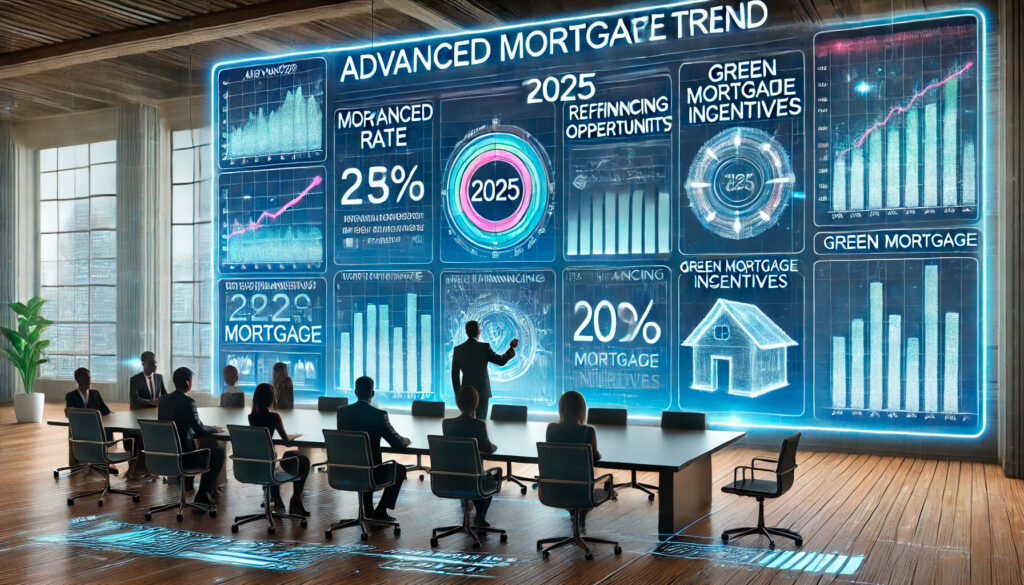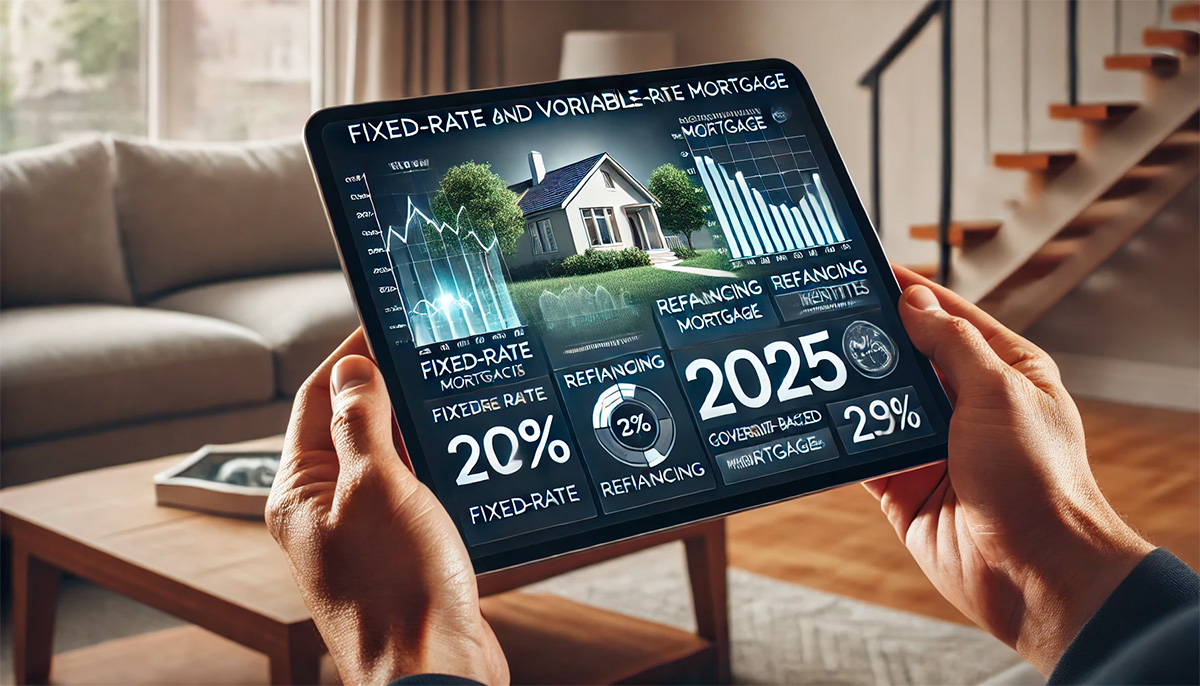
As we enter 2025, the mortgage market is undergoing significant transformations influenced by technological advancements, economic fluctuations, and shifting borrower preferences. For potential homebuyers and current homeowners alike, understanding the prevailing trends is essential for making informed decisions. Whether you are seeking a new mortgage, refinancing an existing one, or exploring government-backed programs, staying ahead of these developments can pave the way for financial success.
This guide offers a detailed look at the most prominent mortgage trends shaping 2025 and provides practical insights to help borrowers navigate the evolving landscape.
Fixed-Rate Mortgages Remain Popular
The predictability of fixed-rate mortgages continues to make them a preferred choice for borrowers in 2025. With fixed-rate options, borrowers lock in their interest rates for the entirety of the loan term, ensuring consistent monthly payments regardless of economic fluctuations. This stability is particularly appealing during periods of uncertainty or rising interest rates.
In 2025, lenders are promoting fixed-rate mortgages with increasingly flexible terms, offering durations ranging from 10 to 30 years. Borrowers are drawn to these loans for their long-term affordability and budgeting simplicity. For instance, first-time buyers, who often prioritize stability, find fixed-rate mortgages to be a reliable way to enter the housing market without unexpected financial stress.
However, it’s important to weigh the potential drawbacks. Fixed-rate mortgages typically come with higher initial interest rates compared to variable-rate loans. While this may result in slightly higher payments initially, the long-term benefits of predictable expenses often outweigh the short-term costs.
The Growing Appeal of Variable-Rate Mortgages
While fixed-rate mortgages dominate the market, variable-rate mortgages (VRMs) are gaining renewed interest among borrowers seeking flexibility. With VRMs, the interest rate is tied to market fluctuations, potentially offering lower initial payments compared to fixed-rate options. In 2025, hybrid mortgages are emerging as a popular variation. These loans begin with a fixed rate for a set period—such as five or seven years—before transitioning to a variable rate for the remainder of the term.
For borrowers who expect to sell their homes or refinance within a few years, VRMs can be a cost-effective choice. Additionally, those with higher risk tolerance and the ability to adapt to changing payments may benefit from the potential savings these loans offer during periods of declining interest rates.
It’s essential, however, to carefully evaluate the risks. Rising interest rates can lead to increased monthly payments, placing a strain on household budgets. Borrowers considering this option must have a clear financial plan to accommodate potential fluctuations.
The Role of Credit Scores in Mortgage Approval
In 2025, lenders are placing even greater emphasis on credit scores when evaluating mortgage applications. A high credit score signals financial responsibility, granting borrowers access to better terms, such as lower interest rates and reduced fees. Conversely, a lower credit score may result in higher costs or additional conditions, such as larger down payments.
Borrowers with weaker credit profiles are encouraged to take proactive steps to improve their scores. This includes timely bill payments, reducing outstanding debts, and addressing inaccuracies on credit reports. With credit scores serving as a critical determinant of mortgage approval, maintaining a strong credit profile is more important than ever.

Technological Innovations Reshaping the Mortgage Process
Technology continues to revolutionize the mortgage industry, making the process more streamlined and accessible in 2025. Borrowers now have access to online platforms offering end-to-end services, from pre-qualification to closing. These platforms reduce paperwork and simplify communication between lenders and applicants.
Artificial intelligence (AI) and machine learning tools are increasingly being used to analyze borrower data, enabling lenders to offer personalized loan recommendations. Additionally, blockchain technology is enhancing transparency in property transactions, reducing errors, and accelerating the approval process.
Embracing these digital advancements can lead to faster approvals and a more convenient experience for borrowers, especially those seeking efficiency in a traditionally time-intensive process.
Green Mortgages and Sustainability Incentives
Sustainability is becoming a key focus in the mortgage industry, with lenders introducing products designed to promote eco-friendly housing. Green mortgages, which provide favorable terms for energy-efficient homes, are gaining traction in 2025. These loans encourage borrowers to invest in environmentally conscious construction or renovations, aligning with global efforts to reduce carbon footprints.
In collaboration with government agencies, lenders are also offering incentives, such as tax breaks or subsidies, for borrowers who choose sustainable housing options. This trend benefits both the environment and homeowners, who can enjoy long-term savings on energy costs.
Refinancing Opportunities in 2025
Refinancing remains a popular strategy for homeowners looking to optimize their mortgage terms. In 2025, refinancing options are being used to achieve various financial goals, from lowering interest rates and monthly payments to consolidating debts or funding home improvements.
Borrowers considering refinancing should assess the current market rates and compare them to their existing mortgage terms. Additionally, understanding the associated costs, such as closing fees, is essential to ensure that refinancing delivers meaningful financial benefits.
Government Policies and Mortgage Accessibility
Government programs continue to play a vital role in expanding access to mortgages, particularly for first-time homebuyers and low-income households. In 2025, new initiatives aim to reduce barriers to homeownership through subsidized loans, down payment assistance, and expanded eligibility criteria.
For borrowers, understanding these programs and their requirements is crucial for taking full advantage of available opportunities. Partnering with lenders experienced in government-backed mortgages can simplify the application process and increase the likelihood of approval.
Adapting to Economic Conditions
The broader economic landscape heavily influences mortgage trends, and 2025 is no exception. Factors such as inflation, employment rates, and housing market dynamics shape both lender policies and borrower behavior. For example, during times of high inflation, fixed-rate mortgages become more attractive due to their predictable payments. Conversely, a declining interest rate environment may favor variable-rate options.
Borrowers must remain informed about these conditions and adapt their strategies accordingly. Regular consultations with financial advisors can provide valuable insights into how economic trends impact mortgage decisions.
Conclusion: Navigating the Mortgage Landscape in 2025
The mortgage market in 2025 reflects a blend of tradition and innovation, offering borrowers a wide array of options to meet their unique needs. Whether opting for the stability of fixed-rate mortgages, the flexibility of variable-rate loans, or exploring green initiatives, understanding the trends shaping the industry is key to making confident and informed decisions.
By leveraging technological advancements, improving creditworthiness, and staying attuned to economic conditions, borrowers can navigate the complexities of the mortgage process with greater ease. As the market continues to evolve, proactive planning and a clear understanding of available options will remain critical for achieving financial success and securing the home of your dreams.
